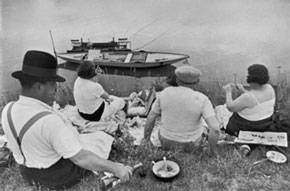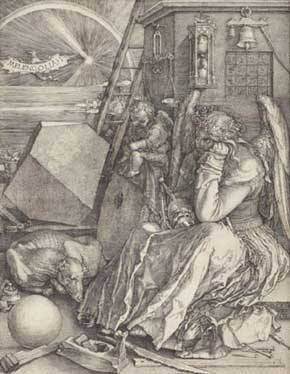
Henri Cartier-Bresson. Juvisy, France, 1938. The Museum of Modern Art, New York. Gift of the photographer. © 2010Henri Cartier-Bresson / Magnum Photos, courtesy Fondation Henri Cartier-Bresson, Paris
Henri Cartier-Bresson: The Modern Century — Art Institute of Chicago The first large-scale retrospective in three decades devoted to Henri Cartier-Bresson(1908–2004)—one of the most original, accomplished, and influential figures in the history of photography. At the ArtInstitute of Chicago, through October 3, 2010,]]>
August 5th, 2010 – Source: Art Institute of Chicago
From a young age, Cartier-Bresson was fully immersed in the active cultural life of Paris. Originallytrained as a painter by his uncle and then apprenticed with the artist André Lhote, he was also anavid reader who found his way into the back rooms of the Dame Blanche and other Parisian caféswhere the poet André Breton and his fellow Surrealists held forth. When he was 24, Cartier-Bresson discovered the Leica—a light, handheld 35mm camera that served as the sketchbook forthe private observations he made while discovering himself, ideas, and the world around him. Hewould later become a master of candid “street” photography who influenced—and continues toinfluence—generations of photographers that followed.
Cartier-Bresson honed his skills as a photographer in the early 1930s, and his inventive workduring this time period helped to define the artistic potential of modern photography. A decadelater, after surviving three years as a prisoner of war, Cartier-Bresson emerged from World War IIdetermined to document a world in the midst of profound change. He did so in 1947 by joiningRobert Capa and others to found Magnum Photos—an organization that allowed photojournaliststo reach broad audiences through such publications as Life and Paris Match while still retainingindependence and control over their work. Magnum Photos quickly established itself as a modelphoto agency that to this day serves as one of the most important “archives” of the significantevents of the 20th century. Cartier-Bresson, with hisextraordinary ability to capture images of life on therun, was one of its leading photographers, and hisportfolio bears witness to his personal credo ofcapturing “the decisive moment,” which is also thetitle his first major book, published in 1952.
Henri Cartier-Bresson: The Modern Century isorganized in distinct, thematic sections. The first twosections are chronological surveys focusing on Cartier-Bresson’s independent work of the early1930s and immediately following World War II. Following this early work is the photographer’streatment of the ancient patterns of life in three parts of the world: the East (India and Indonesia atthe time of their independence, including his iconic pictures of Mahatma Gandhi’s last days and theaftermath of his death), the West (particularly the Soviet Union, as Cartier-Bresson was the firstnon-Soviet photographer to gain access to the country after Stalin’s death in 1953), and France.Also included here are photographs taken in the United States during the postwar boom, many ofwhich have never been seen before, and during his four-month stay in China in 1958 documentingthat country’s “Great Leap Forward.” Concluding the exhibition are sections organized around suchthemes as the subject of beauty, street crowds and gatherings around the world, thetransformation of Europe as old cultures are confronted with modern realities, and portrait work.The 34 portraits in the exhibition in particular reveal the artist’s skill as a keen observer of thehuman condition and as one of the great portraitists of the 20th century.
Follow us on:


